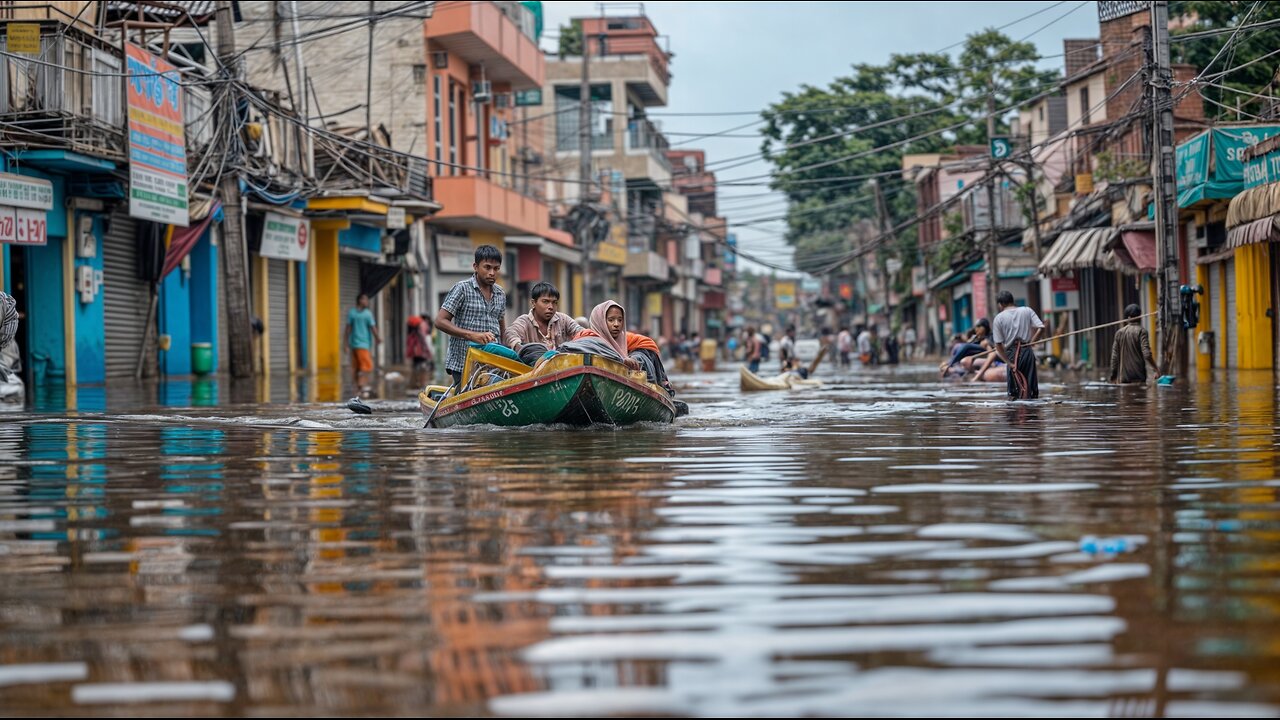Premium Only Content

India NOW! Severe Flood Tragedy: Heavy Rains, Rising Rivers, and Destruction
The Indian state of Assam has been severely affected by floods. Due to abnormally heavy rains, the water levels in the Brahmaputra River and its tributaries have exceeded critical levels, causing widespread flooding in 28 districts of Assam.
Nearly 2.3 million people in 3,446 villages were forced to leave their homes. The hardest hit was the Dhubri district, where more than 750,000 people were affected. It is followed by Cachar and Barpeta districts. Hundreds of relief camps have been set up across Assam to accommodate the displaced. The death toll from storms, floods, and landslides in the state has already reached 78 people, with 66 of them directly due to the floods. Large-scale rescue operations are underway. On July 7 alone, 70 people were rescued.
The floods have caused enormous damage to agriculture, inundating over 68,000 hectares of arable land.
Roads, bridges, and fish ponds across the state have been damaged by the disaster.
Kaziranga National Park, home to the world's largest population of one-horned rhinoceroses, has also been affected by the severe flooding. 114 wild animals have died, including 6 rhinos, marking one of the highest flood-related animal mortality rates in the park in many years.
The Regional Meteorological Center reported that Assam received 12% more rainfall in June than usual.
During the monsoon season, the Brahmaputra River — one of South Asia's largest waterways — and its tributaries often overflow, flooding low-lying areas. However, in recent years, these disasters have become significantly more extensive and prolonged. This is attributed to a combination of hydrological and climatic factors in the region, as well as a lack of effective river management.
What is often overlooked is that the primary factor behind the rapid increase in the frequency and intensity of floods, not only in Assam but worldwide, is the rise in atmospheric moisture associated with global warming.
The good news is that scientists have already developed technology that can quickly and effectively reduce atmospheric moisture while simultaneously cleaning the oceans of microplastics, restoring their natural function as the planet's air conditioner. These measures will rapidly reduce the intensity of natural disasters, particularly abnormal precipitation, storms, and hurricanes. The application of this technology will also provide unlimited clean water to all those in need.
It sounds like science fiction! But it is absolutely possible to implement on a global scale in the very near future, provided there is human will. You can learn more about this in the video: "Water From Air: The Path to Saving Humanity | Popular Science Film."
-
 57:35
57:35
AllatRa TV
10 days agoFrom Brain Damage to Infertility: How Nanoplastic Is Stealing Your Future
1131 -
 1:43:40
1:43:40
Badlands Media
11 hours agoBaseless Conspiracies Ep. 142: Doxxing the Deep State with Nick Noe - Part 3
73.8K15 -
 2:04:08
2:04:08
Inverted World Live
5 hours agoTop Secret Area 51 Project Spawns 'Invisible Enemy' | Ep. 77
47.5K7 -
 2:51:11
2:51:11
TimcastIRL
6 hours agoUNHINGED Liberals PROTEST Colbert Cancellation In NYC, Propaganda Machine IS COOKED | Timcast IRL
184K77 -
 2:42:48
2:42:48
The Quartering
5 hours agoToday's News Chat & Act 2 Of Expedition 33
61.8K4 -
 DVR
DVR
SpartakusLIVE
7 hours agoMonday MOTIVATION || Games w/ the BOYS into the NIGHT
57.5K -
 3:16:02
3:16:02
Barry Cunningham
6 hours agoNEWS ON THE PLOT AGAINST THE PRESIDENT AND IT'S A MOVIE NIGHT!
87.5K53 -
 2:00:32
2:00:32
Glenn Greenwald
9 hours agoWorld Finally Horrified by Israel's Atrocities in Gaza; Mass Starvation Expert Warns of Spiraling Crisis in Gaza; AOC Votes to Fund Israel's Iron Dome | SYSTEM UPDATE #489
92K135 -
 LIVE
LIVE
Spartan
6 hours agoSpartan - Pro Halo Player for OMiT | Scrims vs OMiT Black
358 watching -
 2:47:11
2:47:11
crgoodw1n
5 hours agoMonday stream Pt.2! Max Traders are almost here!
21.2K1